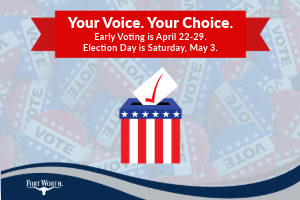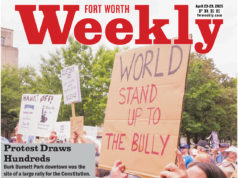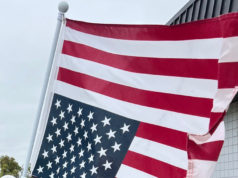North Texas’ economic outlook varies with what sector you’re looking at, but if magazines aimed at middle- to upper-income groups are any indicator, things are, well, glossy.
Two new business quarterlies, both aimed at “C-suite” executives, are going head to head in Fort Worth. Though their outlooks differ slightly, they are going after similar audiences and advertising dollars. And both are offshoots of established publications: FWB CEO is part of the Fort Worth Business (formerly Fort Worth Business News) organization, while FW Inc. is published by the company behind Fort Worth, Texas magazine.
At the same time, 360 West is extending — or perhaps, concentrating — the reach of its monthly magazine by putting out two slimmer magazines aimed at a very narrow niche: the homeowners and merchants in, respectively, the 76107 and 76092 zip codes. The two magazines, focusing on lifestyle fare such as dining and nightlife, are direct-mailed to businesses and to owners of homes and condos in those specific areas but also to people who live downtown and in the larger neighborhoods surrounding those targeted zip codes.
Backdrop for all this, of course, is a greatly improved regional economy and the continuing shrinkage of the Fort Worth Star-Telegram. And while CEOs and CFOs and homeowners and condo dwellers may get to know one another and their parts of town better because of it, things like investigative reporting and coverage of poor neighborhoods and poor people’s issues won’t be improving due to the new publishing ventures, except perhaps for stories about charitable groups.
On its website, 360 West describes itself as “a lifestyle magazine that gives affluent readers a full-circle view of where they live. Geographically, we target consumers who live west of Highway 360 — from Westover to Westlake — because we think the western half of the Metroplex is the best half.”
FW Inc. “is a lifestyle business magazine,” publisher Hal Brown said. “It won’t be doing hard-hitting news.”
The plan, he said, is to “tell the background stories on C-level executives” and entrepreneurs and how they became successful.
Brown is comfortable with his publications cheerleading for Fort Worth — FW Inc. will have a regular column written by chamber of commerce officials, for instance — or aiming his coverage at more affluent residents. When Fort Worth, Texas was created 18 years ago, “many people felt I should cover the entire demographic profile” of the city, he said. But like many city and regional magazines across the country, he said, he went for a “targeted demographic.”
James Dowden, executive director of the City and Regional Magazine Association, said that the publishing boomlet in Fort Worth is hitting on two national phenomena — the continuing success, on one hand, of regional general-interest consumer magazines like 360 West and Fort Worth, Texas, and on the other, the recent growth in some areas of local and regional “business-to-business” publications. Both of those trends are going on while similar magazines aimed at national audiences “are dying,” he said.
On the general interest side, he said, “Luxury is where it’s at” — that is, magazines that appeal to the middle class and up. While daily papers have continued their decades-long slide in circulation, and alternative newsweeklies “have been taking a beating,” Dowden said, “city magazines, in their quiet way, have carved out a niche” in every major metropolitan area.
Neither Dowden nor any of the local publishers saw any connection between the success of their magazine types and the growing gap between rich and poor in this country. But they did see a connection to the declining fortunes of daily papers.
“With the declining business coverage provided by the Star-Telegram, there is a niche in business news” that hadn’t been covered in some time, said Paul Harral, editor of FWB CEO.
In a way, Harral and Scott Nishimura, executive editor of FW Inc., have swapped places in recent months. The two are friends and former Star-Telegram colleagues. When executives at the two parent publications first started planning the CEO-level business magazines, Harral was an editor emeritus at Fort Worth, Texas and Nishimura was at the Business Press. The two new magazines debuted in the summer, with FWB CEO getting out a few weeks ahead of FW Inc.
Harral said FWB CEO will focus heavily on longform journalism, “with the simple mission of introducing and connecting CEOs and other members of the C-suite to each other.” He said he leans more toward explanatory than investigative coverage.
“Fort Worth for years was this great collaboration of business leaders who got to know each other and worked together,” with one another, and with government and community groups to get things done, he said. As Fort Worth has grown larger, outside influences have increased, and some major corporate players have left the scene, “I haven’t seen quite as much of that collaboration as I used to.”
Both Harral and Nishimura say their new magazines are doing well. Both have skeleton staffs at this point, relying mostly on the editors’ own work and the writers at the parent magazines, plus freelancers.
“The question becomes, is there enough additional advertising out there” to support both, Harral said. “Nobody knows.”
Nishimura said that even though the audience for the two magazines is the same, the business plan for FW Inc. benefits from the consistency and experience of the leaders at Fort Worth, Texas.
Jerry Scott, publisher of 360 West, predicted that “in the long term, probably only one business-oriented magazine survives, at least in its present form.”
He said that with the addition of those magazines to the Fort Worth scene, “we expected some erosion of advertisers in very specific, narrow categories but have seen very little so far.”
The Fort Worth region’s generally healthy economy and continued population growth are attractive to lots of retailers, he said.














To imply that the debut of two high-end magazines in Fort Worth confirms so-called income inequality is absurd. But there is this correlation: Those who decry a growing gap between the rich and the poor are the same folks who eagerly invite hordes of poor to immigrate into this country. Go figure.
To imply that the debut of two high-end magazines in Fort Worth simultaniously doesn’t suggest that maybe the split isn’t quite right is asinine. You’re a flake and a fool, Stouty. Your Mama raise any brats with a lick of sense? Do you expect familys with kiddos walking around with holes in their shoes and their water turned off to buy into your black-hearted stupidity? You suggest that Jesus was lying when he suggested “for it’s in giving that we recieve”? You any kin to that jerk-off jillionaire on TV that wears a wig and is not nearly as human and kind-hearted as my sweet bird-dog? I invite to this sweet country, whole-heartedly, anyone who is suffering from greed-headed, self-satisfied maggots insisting on an attitude of hoo-ray, I got mine, screw you! You’re a real piece of work, Slick. Is your Mama proud of you? Are your parents greed-head rats or decent humans? Come clean, where did you learn this shit? Are any of your kin-folks normal, decent humans? Come clean, I’d like to know. You an average greed-head Repug or a Bagger? You still on food stamps and unemployment dole? You like what you are? You go figure. Maggot.
If Frank Kent sells two Cadillacs in the same day does it lead to the same conclusion, Benny, and will you render the same diatribe? What meds do you take? They’re not working.
You’re the one the Startle-gram canned and then laid around on Food Stamps whining and whimpering like a little girl. Grow up, amount to something, wash your face and get a decent job. The McDonalds on Berry Street needs someone like you, they have a sign up.